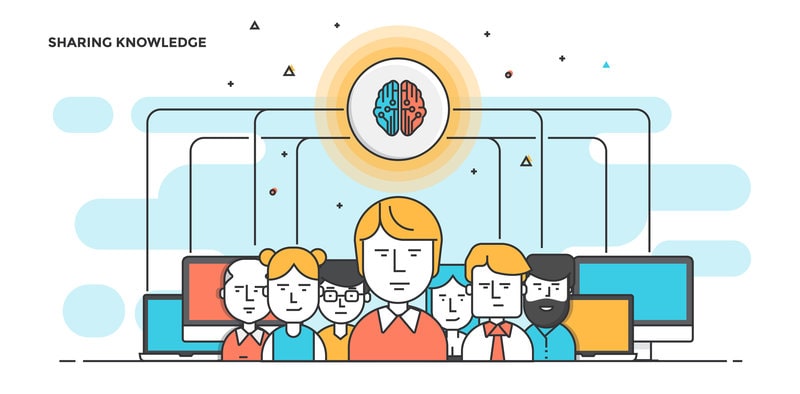Every marketer aspires to deliver the "right message, to the right customer, at the right time." Yet, achieving this goal can often feel elusive due to the complex nature of customer data management. Information is frequently stored in multiple formats across different databases and used inconsistently across an organization, creating significant barriers to streamlined and actionable use of this data.
Data silos - a common occurrence where essential customer information remains disjointed across the organization - exemplify this problem. Data silos lead to missed opportunities and impaired marketing efficiency, as vital insights remain untapped.

According to Salesforce's 8th State of Marketing report, brands are responding to this challenge by diversifying their data sources, with projections indicating an average of 18 data sources used by 2023. However, despite this data abundance, only 14% of organizations achieve a 360-degree view of their customers, according to the 2021 Gartner Cross-Functional Customer Data Survey.
This discrepancy illustrates the widespread issue of data silos, restricting comprehensive access to customer data, hampering effective decision-making, and ultimately affecting the customer experience. Breaking down these data silos is therefore not only necessary for operational efficiency but also pivotal in creating meaningful, personalized customer experiences.
Understanding Data Silos
Data silos emerge when the data from various parts of your organization isn't interconnected. This lack of integration often results in significant knowledge gaps and missed opportunities for synergy across departments – a factor that is closely tied to the issue of organizational silos.
These silos don't merely cause minor inconveniences; they send ripple effects throughout the organization with severe consequences. To illustrate, consider this statistic: 62% of business buyers say it generally feels like they're communicating with separate departments, not one unified company. This sense of fragmentation, a direct consequence of data silos, amplifies the urgent need for organizations to dismantle these barriers to unified data.
An Illustration of Data Silos
Imagine this scenario: James, a loyal customer, has been purchasing from his favorite online store for years. He decides to walk into their brick-and-mortar shop one day to buy a product. The in-store sales associate has no knowledge of James's previous online purchases, his preferred items, or his loyalty status. James leaves the store slightly disappointed by the impersonal service.
At the same time, the email marketing team, unaware of James's recent in-store purchase, sends him a promotional email for the very same product he just bought. This irrelevant communication frustrates James further.
In this scenario, the store's sales, marketing, and in-store teams operate in data silos. They lack a unified, 360-degree view of James, leading to a disjointed customer experience. This example underscores how data silos can create missed opportunities and negatively impact customer relationships.
Known vs Unknown Customer Data: Decoding the Problem
To comprehend the extent of the issue, it's essential to distinguish between "known" and "unknown" customer data.
"Known" data refers to personally identifiable information (PII), such as data collected when a customer fills out a form or makes a purchase. This information is marketing gold; however, obtaining such data is becoming increasingly challenging due to strict privacy legislation and cost implications.
In contrast, "unknown" data refers to information that resides in separate "silos" within the organization. These include departments such as sales, marketing, and customer service/support. Each silo often fails to connect in a way that can drive a complete customer journey, causing disjointed experiences and missed opportunities.
Causes of Data Silos
There are several reasons why data silos occur within organizations:
- Different Systems and Platforms. Different departments often use separate systems and platforms for their operations. This segregation results in fragmented and incompatible data, thus creating information silos.
- Lack of Interdepartmental Collaboration. Departments may operate independently without effective communication or data-sharing protocols, leading to information gaps and silos.
- Privacy Concerns and Regulations. Strict legal requirements for data handling and storage can inadvertently promote data silos as businesses strive to maintain compliance while sharing data across departments.
The Path to Data Unification: Breaking Down the Silos
To improve marketing efficiency and customer experience, we must break down these data silos and create a unified customer profile. This goal involves consolidating data from various sources and creating a "golden record" – a single, accurate source of information for each customer. However, this task is challenging due to the divergent ways each system stores data and the cost implications of resolving these differences.
1. Embrace Data Portability
In the marketing sphere, data portability - the process of making customer attributes available to other systems - serves as a linchpin for data unification. It's about ensuring the free yet secure flow of customer data from one system to another, thus bolstering our understanding of a customer's status and intent.
To realize data portability, we need to effectively centralize and integrate our data. Centralization aims to funnel disparate data spread across an organization into a single repository. On the other hand, integration entails employing tools and techniques like scripting and Extract, Transform, Load (ETL) processes. Such integrative technologies ensure a seamless and accurate data flow across various systems.
It's important to keep an eye on data privacy and compliance during this process. Given the intricate weave of regional and international data privacy laws, efficient data privacy management is paramount. This not only guarantees regulatory compliance but also fosters a trust-based relationship with customers.

2. Establish Governed Self-Service Access
One effective strategy to foster data unification is establishing governed self-service access. This approach ensures individuals have access to the data they need while simultaneously maintaining alignment with an organization's governance policies. By doing so, an organization can safeguard its data's integrity and security, empowering teams with the information needed for effective decision-making.
Business intelligence (BI) tools, along with other self-service software, can play a pivotal role here. These offer robust self-service capabilities, allowing users across an organization to access, analyze, and visualize data. And all this without needing extensive technical expertise, democratizing data access and usage.
3. Implement a Holistic Knowledge Management System
A comprehensive knowledge management platform can be a game-changer for an organization wrestling with data silos. A KM platform's core function is to consolidate and streamline data from disparate departments, making the information easily accessible and usable throughout the organization.
But we need to move beyond a traditional KM system to harness the full potential of our data. The advancement of AI and machine learning has greatly elevated the effectiveness of these systems. They now come equipped with features like automatic data tagging, predictive analytics, and smart search functions, leading to more efficient data usage.
Here's a quick rundown of how to maximize your KM platform:
- Integration and Automation. Tightly integrate your KM system with other organizational systems, such as your CRM or ERP. Automated workflows can then push and pull data across systems, breaking down data silos.
- Leverage AI and Machine Learning. Use AI and machine learning capabilities to automate data tagging and enhance search functionality. This will speed up data retrieval and make it easier for employees to find the information they need.
- Encourage User Adoption. Organize training sessions and create guides to familiarize your teams with the KM system. High user adoption ensures a high return on your KM investment.
- Foster a Knowledge-Sharing Culture. Encourage teams to contribute their insights and learnings to the KM system. Regularly update the system with new data and information.
Through the integration and active use of an advanced KM system, organizations can not only alleviate the data silo issue but also improve decision-making, increase efficiency, and drive a truly data-driven culture.
4. The Role of Knowledge Base Software
The right knowledge base software isn't just a storage space for FAQs and how-to guides - it's a dynamic tool that plays a crucial role in dismantling data silos and driving data-driven decision-making. By creating a unified platform for all relevant data, documents, and insights, a company knowledge base enhances data sharing, collaboration, and visibility across an organization which in turn improves overall organizational efficiency and enables a more complete view of the customer.
Here's how you can leverage your knowledge base platform to its full potential:
- Centralize Your Knowledge. Start by consolidating all relevant data, documents, and information into your knowledge base software. This includes not just FAQs and guides but also customer feedback, campaign data, sales reports, market analysis, and other business-critical information.
- Integration is Key. Ensure your knowledge base software is integrated with other systems in your organization. Integration allows for real-time updating and sharing of data, preventing the formation of new silos.
- Empower Employees with Self-Service. A knowledge base is also a powerful self-service tool. By providing your employees with 24/7 access to vital information, you empower them to resolve their queries quickly, make data-driven decisions, and improve their productivity.
- Continuous Improvement. Regularly review and update your knowledge base. The data and information in it should be dynamic, reflecting the changing nature of your business and the market.
By maximizing the potential of knowledge base software, organizations can not only break down data silos but also enable a richer, more comprehensive view of the customer. The increased visibility, coupled with enhanced collaboration, paves the way for a truly data-driven and customer-centric organization.
Change Management: A Critical Facet in Dismantling Data Silos
Driving change management involves aligning people, processes, and technology across the organization. This starts with strong leadership driving the initiative, getting buy-in from senior management, and designating "change champions" within the organization. These champions can help in leading and promoting the change initiative at different levels, ensuring its success.
Driving a Collaborative Organizational Culture and Improving Interdepartmental Collaboration
Encouraging an open, collaborative culture is crucial. When all stakeholders understand that they're working towards a common goal – better understanding and serving the customer – resistance to change lessens. Leaders should reinforce that sharing and using unified data isn't just an IT or marketing initiative, but a company-wide shift that benefits all.
Enhancing collaboration and communication between departments can also play a significant role in reducing data silos. Sharing data and insights can improve overall organizational efficiency and lead to a more complete view of the customer.
Communication: Creating a Shared Vision
Clear, transparent, and consistent internal communication from leadership is key to promoting understanding and acceptance of the change. This involves sharing the vision, the need for change, the benefits it will bring, and the steps involved in making it happen. Communication should be two-way – employees' concerns and suggestions should be heard, acknowledged, and addressed.
Training and Support: Empowering People for Change
Change can be daunting, particularly when it involves complex data systems. Organizations should provide adequate training, resources, and support to ensure everyone understands and feels comfortable using new processes. Celebrate quick wins, offer constructive feedback, and continuously reinforce the importance and benefits of the new unified data system.
In essence, effective change management ensures a smooth transition to a unified data system, with minimal resistance and maximal buy-in from all stakeholders.
Wrapping Up: Embracing the Unified Customer View
While the road to data unification is challenging, it is a journey worth undertaking in today's customer-centric marketing landscape. The task involves not just overcoming technological hurdles but also fostering a culture of data sharing and collaboration across departments.
Remember, the goal isn't merely about achieving marketing efficiency; it's about providing a superior and unified customer experience. As we delve into potential strategies for achieving data unification in our next installment, bear in mind that customer data is not just a resource, it's a strategic asset.





